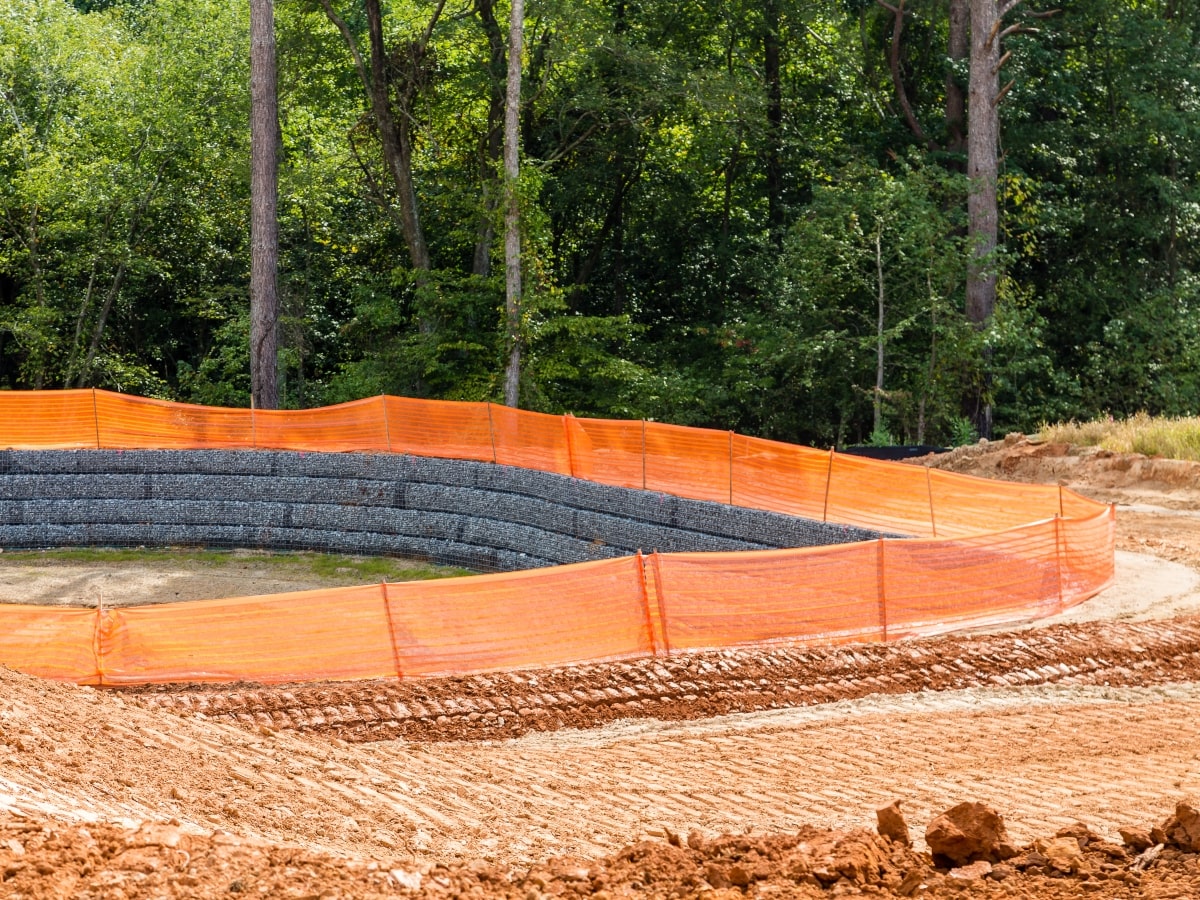Construction sites can have a significant impact on the environment, especially if measures to control sediment are not taken. Sediment control is the process of preventing soil erosion and protecting water quality by using practices such as sediment basins, vegetative cover and sediment control cloth, also known as a silt fence.
That’s why it’s important to have an erosion and sediment control plan in place before your construction project begins. Sediment control measures may seem like an extra expense, but they’re actually very affordable and can save you from costly fines if you don’t comply with environmental regulations.
By implementing a sediment control plan, land development sites can minimise erosion and the impact on their surroundings while still completing their project.
Make sure you understand your responsibilities and sediment control requirements before you break ground.
Implement a sediment control plan
The best prevention for stopping sediments from reaching waterways is to minimise disturbance of the soil as much as possible.
When you do need to move soil, an erosion and sediment control plan can prevent sediment, sand, cement and exposed soil from reaching rivers and other waterways. These contaminants can kill aquatic life, block pipes, and cause significant environmental damage. By creating a sediment control plan, you can stop this from happening.
These plans are required by many local governments and often will need to be submitted for approval before you’ll be able to start working.
Your erosion and sediment control plan should include the location of the job site, design work, the sediment control measures you will be using, and details for site rehabilitation after construction.
Once your plan is in place, be sure to follow through with the tactics and techniques you are planning to deploy, from slope stabilisation to installing sediment traps. This will stop erosion and contamination of local waterways throughout your area.
Use sediment control cloth
Sediment controls are one of the most important environmental measures you can take on any job site to protect habitats nearby. It is cost-effective and can have a huge impact on the air quality and waterways around the job site.
Using sediment control cloth to cover the surface of the job site is one of the most effective ways to prevent soil erosion on flat ground or small gradients. These cloths minimise the amount of erosion and can stop contaminated water from leaving your location.
Another environmentally friendly and effective barrier is a silt fence. When you install a silt fence, you stabilise the environment and prevent erosion, positively impacting the environment around you.
Both sediment control clothes and silt fences trap sediment and reduce the amount of sediment-filled water leaving the job site.
Don’t forget to take care of the soil in the aftermath of your project as well. Use sediment cloths, and mulch over open dirt until grass and other landscaping start to grow in. Give the soil time to settle and the plants time to grow before removing all your soil erosion control.
Keep erosion and sediment in mind when undergoing construction
When working on a construction site, it’s important to put into place measures to protect the environment. Know what your construction plan will be and what exposed areas need to be stabilised.
The consequences of failing to address erosion and sediment issues can be severe and expensive. Not only can erosion block stormwater drains, causing flooding, but it can also destroy habitats for plants and animals. Additionally, failing to address erosion can affect the way rivers flow, harming aquatic ecosystems and impacting local communities.
Ultimately, the costs of not dealing with erosion are far greater than any fines that might be incurred for ignoring this issue.
It’s important to understand the consequences of environmental impact, so you can best protect the natural habitat in your area while building.
Reduce environmental impact
You can minimise the negative impact on your environment by implementing green construction practices, using erosion and sediment controls, and using recycled materials.
Silt fencing is a simple and affordable way to prevent soil erosion on your construction site. What’s more, silt fencing is easy to install and can be easily moved or removed as needed, making it an ideal choice for any construction project.
Also, be sure you are containing and disposing of waste properly, including the recycling and reusing of items. Implementing a plan for each construction area will help you stay focused on your environmental goals on a day-to-day basis.
Make sure all workers are aware of environmental concerns
Being mindful of the environment requires more than just one person. Meet with your construction team and let them know of your concerns and any environmental plans you have in place to sustain the area around the construction site.
Review the plans, conduct a risk assessment, let your employees ask questions, and help them to understand how important they are towards making a positive environmental impact.
Doing so sets your construction project up for success and allows the whole team to feel as if they are working towards the greater good.
Tips for reducing environmental harm during construction
As the construction industry has begun to shift towards eco-friendly practices, there are many initiatives that builders and developers can adopt to stay environmentally conscientious during construction. Here are a few things that you can do on every project to protect the environment:
- Stick to the original plan as much as possible. Deviations often create delays, which gives more time for erosion to occur.
- Silt fencing, or sediment control cloth, is a remarkably simple yet highly effective strategy for controlling soil erosion on construction sites.
- Additionally, sediment fences are surprisingly durable and hold up well even under heavy use, making them an ideal option to keep construction projects running smoothly.
- Using temporary rubbish cages to secure loose rubbish and disposable materials can help to minimise debris from spreading across the building site.
- Scaffold netting is a great tool for building sites, acting as a containment system for construction waste and debris on site.
- Recycle any plastics, papers, or woods that can be recycled and dispose of hazardous waste properly.
- Seal off work areas to prevent dust and fumes from spreading. Keep soil disturbance and pollution to a minimum, and contained to keep waterways healthy.
Remember, environmental sustainability belongs to everyone, and simple little acts go a long way.
Choose TTFS’ sediment control solution for your project
Protecting the environment during a construction project is crucial to habitat preservation and environmental sustainability. Everyone needs to pitch in and do their part in order for us to maintain clean waterways and protect wildlife.
Make sure you have what you need to prevent soil erosion at your next construction site. Installing silt fences and placing down sediment control cloths will help you protect the environment and ensure that contaminated soil does not end up in Australia’s waterways.
Get in touch with the team at TTFS today to purchase your sediment control cloth roll and other erosion control supplies.

